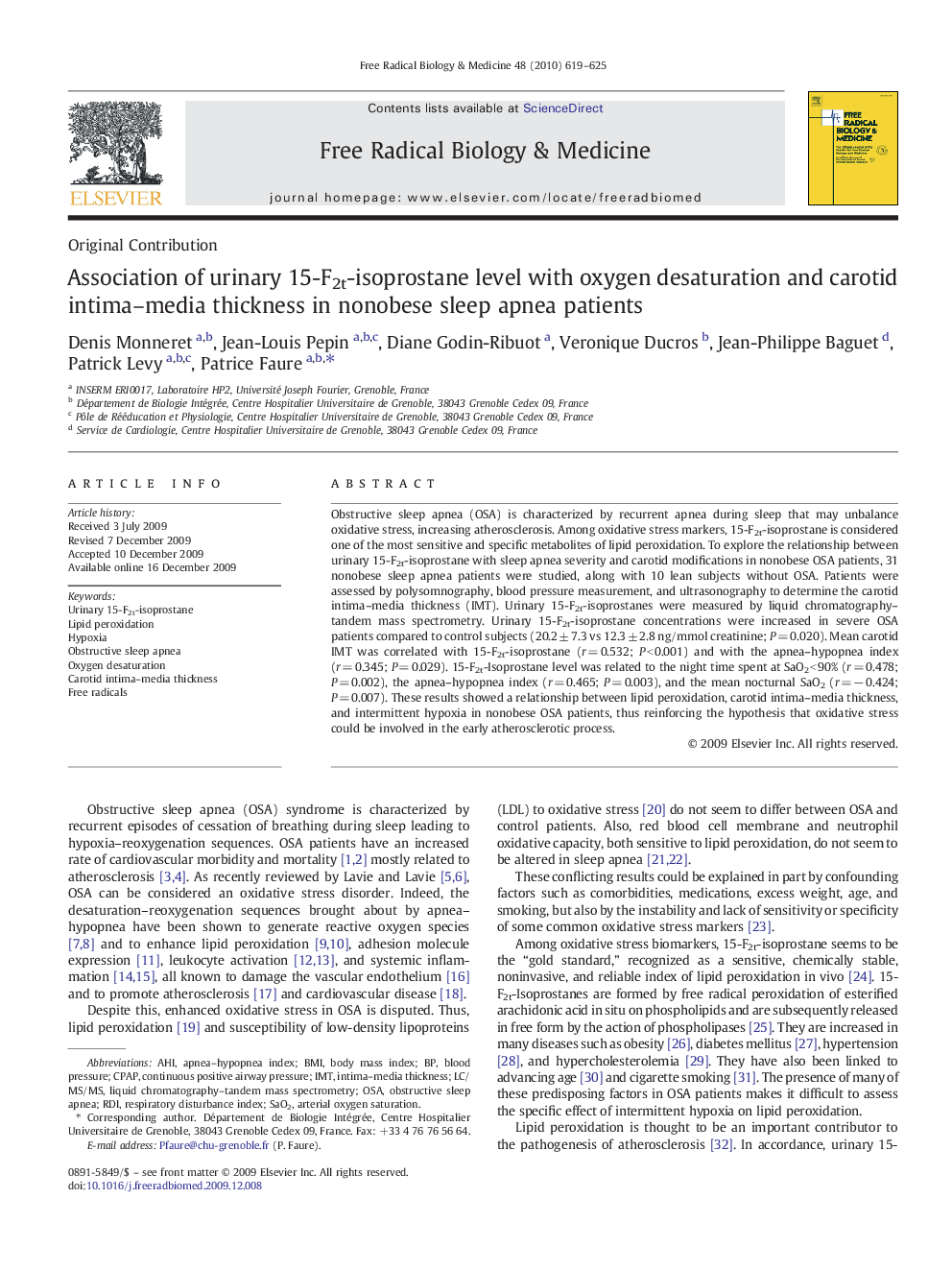| Article ID | Journal | Published Year | Pages | File Type |
|---|---|---|---|---|
| 1910280 | Free Radical Biology and Medicine | 2010 | 7 Pages |
Obstructive sleep apnea (OSA) is characterized by recurrent apnea during sleep that may unbalance oxidative stress, increasing atherosclerosis. Among oxidative stress markers, 15-F2t-isoprostane is considered one of the most sensitive and specific metabolites of lipid peroxidation. To explore the relationship between urinary 15-F2t-isoprostane with sleep apnea severity and carotid modifications in nonobese OSA patients, 31 nonobese sleep apnea patients were studied, along with 10 lean subjects without OSA. Patients were assessed by polysomnography, blood pressure measurement, and ultrasonography to determine the carotid intima–media thickness (IMT). Urinary 15-F2t-isoprostanes were measured by liquid chromatography–tandem mass spectrometry. Urinary 15-F2t-isoprostane concentrations were increased in severe OSA patients compared to control subjects (20.2 ± 7.3 vs 12.3 ± 2.8 ng/mmol creatinine; P = 0.020). Mean carotid IMT was correlated with 15-F2t-isoprostane (r = 0.532; P < 0.001) and with the apnea–hypopnea index (r = 0.345; P = 0.029). 15-F2t-Isoprostane level was related to the night time spent at SaO2 < 90% (r = 0.478; P = 0.002), the apnea–hypopnea index (r = 0.465; P = 0.003), and the mean nocturnal SaO2 (r = − 0.424; P = 0.007). These results showed a relationship between lipid peroxidation, carotid intima–media thickness, and intermittent hypoxia in nonobese OSA patients, thus reinforcing the hypothesis that oxidative stress could be involved in the early atherosclerotic process.
